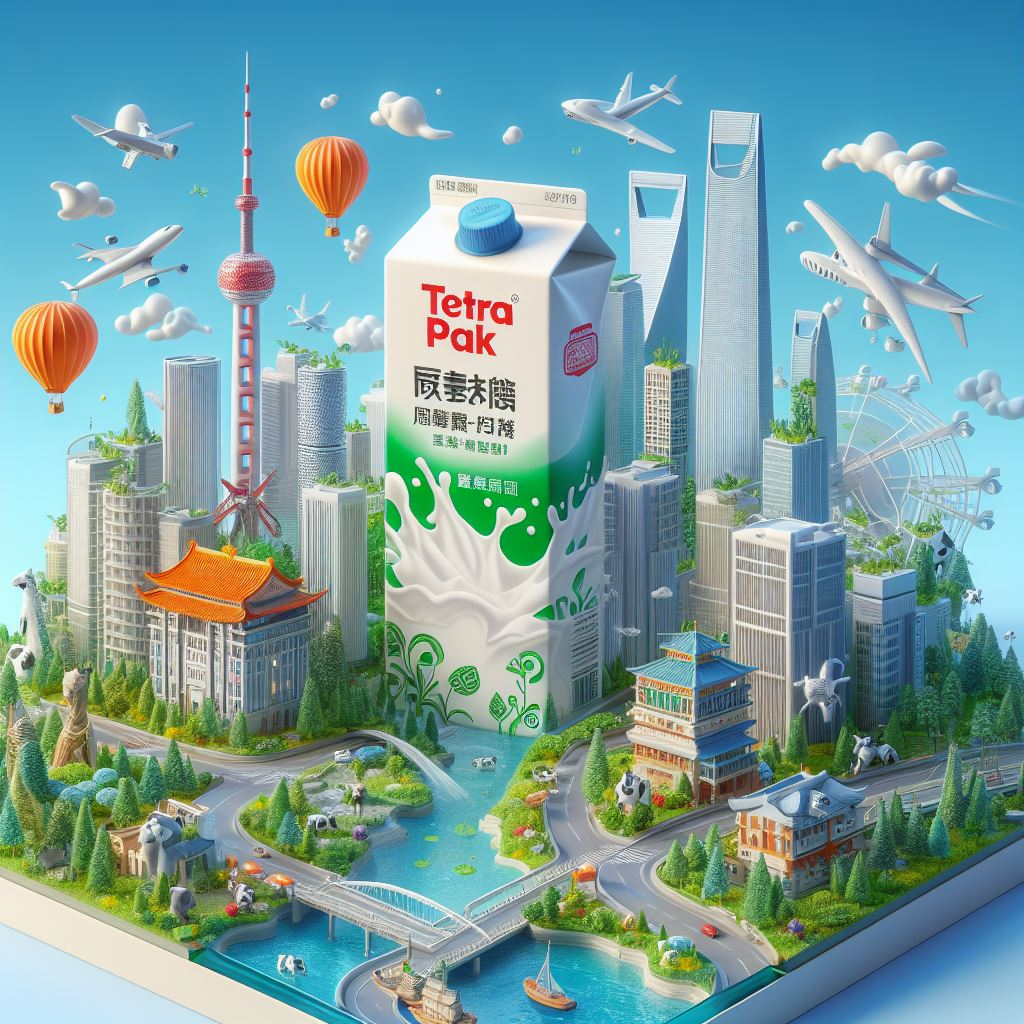In a bid to revolutionize China’s dairy industry, Tetra Pak is spearheading a wave of automation and innovation aimed at enhancing efficiency and sustainability.
In a bid to revolutionize China’s dairy industry, Tetra Pak, a leading food packaging and processing company, is spearheading a wave of automation and innovation aimed at enhancing efficiency and sustainability. With China boasting the world’s fourth-largest dairy industry, the move towards automation not only seeks to slash production costs but also to mitigate greenhouse gas emissions.
Charles Brand, Tetra Pak’s Executive Vice President of Processing Solutions and Equipment, highlighted China’s pivotal role in driving dairy innovation over the past few decades. He emphasized the adoption of modern technology in large-scale dairy farms and processing plants across the country, facilitating significant efficiency gains.
“Automation is a major focus area, as we collaborate with customers to make dairy manufacturing fully intelligent,” Brand stated, underscoring Tetra Pak’s commitment to driving technological advancements within the industry.
Tetra Pak, founded in Lund, Sweden, in 1951 and now headquartered in Switzerland, specializes in manufacturing equipment for various dairy products, including cheese, ice cream, dairy milk powder, and alternative protein, alongside producing cartons for food packaging.
Rising energy and water costs, exacerbated by geopolitical and climatic factors, have prompted food producers to modernize their production facilities. Brand highlighted the increasing adoption of heat pumps, solar technologies, and water recycling solutions, reflecting a growing emphasis on resource efficiency and sustainability within the industry.
Tetra Pak has embarked on a comprehensive program aimed at reducing energy consumption, waste generation, and water usage associated with its equipment. Setting ambitious targets, the company aims to halve greenhouse gas emissions, waste generation, and water usage in customers’ facilities by 2030, compared to 2019 levels.
Recent innovations include a milk separator boasting 40% less energy consumption than semi-open separators, and milk sterilization equipment with a 38% smaller carbon footprint and 41% less water usage.
In 2022, Tetra Pak reported revenue of €12.5 billion (US$11.7 billion), with 36% originating from the Asia-Pacific region. The company’s main food processing equipment factory in China is located in Kunshan, Jiangsu province.
One notable success story is the Ningxia Hui autonomous region, home to the world’s largest liquid milk factory, which witnessed remarkable efficiency improvements following Tetra Pak’s intervention. China Mengniu Dairy, the factory’s owner, achieved a 67% improvement in packaging efficiency, a 43% reduction in energy consumption, and a 19% decrease in total production costs.
Tetra Pak’s endeavors extend beyond efficiency enhancements to environmental sustainability. In 2022, the company distributed 193 billion aseptic cartons, with a significant portion utilizing plant-based plastic, leading to the avoidance of 131,000 tonnes of carbon emissions.
Looking ahead, Tetra Pak aims to invest €100 million annually over the next five to ten years to further enhance sustainability. Plans include increasing the paper content of cartons to 80%, eliminating metal usage, and introducing more plant-based plastic, ultimately aiming for 90% renewable content and a one-third reduction in carbon footprint.
Furthermore, Tetra Pak is poised to capitalize on the growing demand for alternative protein sources, such as plant-based and lab-cultivated foods, in China. By supplying equipment like bioreactors, the company aims to support Chinese firms in manufacturing products with lower greenhouse gas footprints, contributing to food security and efficiency.
As Tetra Pak continues to drive innovation and sustainability in China’s dairy industry, the future promises a more efficient, environmentally friendly, and resilient food production landscape.
